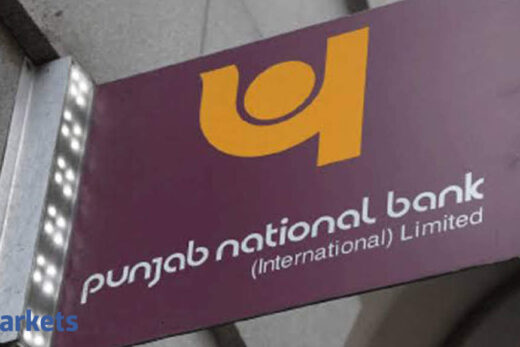ET Now: Your gross net NPA that stands at about 14.1%, which is slightly lower than the pro forma gross net NPA of 14.71%. Although you have reported profits– your overall stressed assets are one of the highest amongst the PSU banks. What has led to such high NPAs?
CH SS Mallikarjuna Rao: See there are two things– PNB has been holding high gross NPA percentage for long time and there has been a considerable improvement in the last one year. Even though if you look at the outstanding level– either at the gross NPA or the net NPA compared to March 20– and the March 21 figures remain disrupt, it is just flat, there is no increase in the number. However, in terms of the percentage, increases are appearing because the credit growth has not been very high at the end of March 21. On the contrary corporate credit book has shrunk by almost minus 33%, so in percentage terms it will correlate.
Coming to generic observation, compared to many public sector banks our gross NPAs are high whereas net NPA is in a controlled position, even though currently, it is appearing at 5.7 only because of the pro forma NPA. Due to COVID what happened was there was increase in the higher element of slippage but we are expecting the sales slippage to go down by way of recovery in the NPA cost and also controlling the slippage in the next two quarters that is quarter one and quarter two —we expect better position in terms of the slippage.
So, one reason is that gross NPA has been high in PNB for quite some time where we have been enduring to reduce that to a greater extent. Second is —because of the pro forma NPAs, the slippage has been high. Third is because of the advances, growth is not being there in percentage terms, it is looking elevated because outstanding figures remain the same in both gross NPA and net NPA compared to last year.
ET Now: The COVID second wave has been very severe –tell us a little bit about the impact on the collection efficiencies, on the various segments and if you could give us a geographical state wise break up as well?
COVID first wave’s impact was nullified almost by way of various measures taken by the Government of India and RBI and as a result the economy started to coming back from October onwards. Once the COVID impact number two came, it has been more severe, in terms of impact on the lives, effect on the people to get hospitalised sociologically. With respect to economy, it picked up pace October onwards but after second wave–impact on economy is more pronounced because the time available to their disposal for recuperating or coming back to normalcy was not there.
The major affected areas are MSME because MSME are units where they will not have very high cash surplus. In the aftermath of the COVID-one, they were given emergency line of credit by way of 20% up to 25 crore which was increased to 50 crore and later on– in the month of August they were identified some stressed sectors. Now, those who are trying to come back to normalcy, if you look today, even though the slippage looks elevated across the banking industry in terms of retail and agriculture, I expect retail to settle down in the next two quarters that is by June and September whereas MSME stress will continue for some more time which need to be addressed more effectively.
So, we expect that the things to improve and we come out of the COVID by June end and economy is looking that effectively during the current financial year along with improvement in the MSME segment.
ET Now: What kind of rise or what kind of uptick do you expect in NPAs for next two quarters?
I do not expect gross NPA or net NPA to increase in the next two quarters, on the contrary it will go down. For that two reasons- one is credit growth will be there, second is in real time outstanding reduction will do in gross NPA and net NPA effectively, we are very confident of concluding the percentages in the next two quarters.
ET Now: How much do you expect to come via the NCLT route?
At this point of time, it is really very difficult for us to estimate for the entire year of recovery due to COVID. We would be having a correct estimate when we declare the results for June, however, to have an estimate up to June we have identified that recovery and upgradation should be at least 8,000 crore by June 2021. So, in the current quarter already two months have passed, third month is running we have already got 3000 crore recovery and reduction together that is another 4000-5000 crore, we are expecting during the current month where it will go up to 8000 crore.
We will make overall year estimate after we declare the results of June because we have to look at NCLT cases also and see how it is going to pan out post pandemic. Coming to couple of accounts for particularly DHFL account in the month of March, we have received money from Bhushan Power which was NCLT settled account, DHFL is the one where we are expecting recovery during the current quarter, but we will have to wait and see because the case is in the NCLAT –where the results should process in the finance stages. Our proper estimate should be out when we declare the results of June.
ET Now: What have you made of the kind of steps that have been taken by the Reserve Bank for MSME and what more do you think needs to be done?
The current methods declared by RBI are sufficient because RBI has been very sensitive in the last four and a half years particularly when the COVID onset has come in our country. So, they have come back with every policy declaration measures in such a way to maintain liquidity in the position, provide a relief to the banks in terms of provisioning, restructuring window and government also has supplemented by providing the emergency line of credit.
Now, the question is- from October onwards in the last year -we have seen good amount of order book building up with MSMEs– as a result we were expecting MSME stress to come out but Covid second wave happened. However, across the globe, currently COVID second wave almost has receded particularly in the Europe and US based, where our exports are in various sectors, I am expecting that July onwards the order book once again will build up in terms of the MSME segment and the next in nine months will be proper growth. This is why RBI has though reduced the GDP estimates–they have put it at 9.5 percent in the current financial year, so MSMEs order book will be much better from July onwards. Already some of them are in a better position but execution and creating the operating cycle to get back the money is the one which takes time may be one month-one and a half month.
ET Now: Reserve Bank has maintained a status quo on rates. What is your outlook on the measures that have been taken by the Reserve Bank and what is going to be impact on your treasury book?
We do not have any impact on treasury book because last year we have already earned 4395 crore which was the highest in the history of PNB. Similarly, this year as well I am expecting the growth income from treasury could be there in the Q1 and Q2 that is H1 would be better and we will have to wait and see how H2 will be standing out because already the interest rates have bottomed out. In order to continue the sentiment because COVID impact is there –the RBI has not touched the repo rates they have maintained in the last four policies, high amount of liquidity is available in the market.
However, we are not seeing high amount of demand by way of new ventures coming in the investment but we expect that the government’s policies declared through the budget in terms of investment in infrastructure, four segments and aviation segment will start kicking off from next one month or two months downwards thereby we see some credit growth. Now, the other objective of the RBI is to control the inflation which they have kept at almost 5.1 projectile up to March 2022.
RBI is also trying to protect the what you call yield in such a manner it will not go beyond the limit wherein probably the government will have an opportunity to borrow further in the market. So, considering these factors for some more time– the interest rates will remain– if at all there is any possibility of upward based on the inflationary pressures in the days to come. There could be review in H2 of the current financial year.



